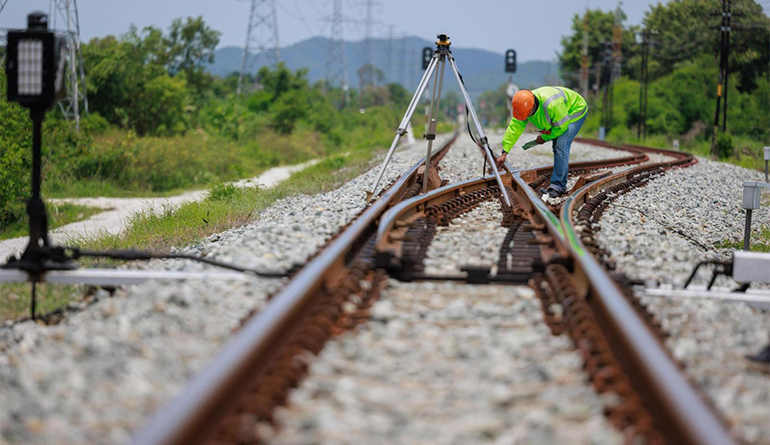
Railway Survey
A railway survey involves a comprehensive examination of factors necessary for the planning, design, construction, maintenance, or improvement of railway infrastructure. Here are the key components of a railway survey:
Route Selection: Surveyors assess potential routes for new railways or expansions to existing ones. This involves studying topographic maps, conducting field surveys, and considering factors such as terrain, geological conditions, environmental impact, land use, population density, and economic viability.
Topographic Survey: Similar to road surveys, topographic surveys for railways involve mapping the natural and man-made features of the land along the proposed railway corridor. This includes details such as elevation, slopes, existing structures, utilities, water bodies, and vegetation.
Alignment Survey: Determining the precise location and alignment of the railway track, including curves, grades, bridges, tunnels, and level crossings. This is crucial for ensuring safe and efficient train operation, as well as adherence to engineering standards.
Geotechnical Survey: Assessing soil and geological conditions along the railway route is essential for designing stable foundations, embankments, cuts, and drainage systems. Geotechnical surveys evaluate soil types, stability, bearing capacity, groundwater levels, and seismic risks.
Environmental Survey: Railway projects often require environmental impact assessments to identify and mitigate potential ecological sensitivities. Surveys may include assessments of habitats, water resources, air quality, noise levels, and cultural heritage sites, as well as compliance with regulations related to wildlife protection and pollution control.
Utility Survey: Identifying the location of underground utilities such as pipelines, cables, and communication networks is critical to avoid conflicts during railway construction and minimize service disruptions.
Right-of-Way Survey: Determining the boundaries and ownership of land needed for railway construction involves conducting right-of-way surveys. This includes legal research, boundary marking, negotiations with landowners, and acquisition of necessary property rights.
Traffic Survey: Collecting data on railway traffic patterns, volumes, speeds, and cargo types helps engineers design railway systems that accommodate current and future transportation needs efficiently.
Track Condition Survey: Assessing the condition of existing railway tracks, including rails, sleepers, ballast, and drainage, is essential for prioritizing maintenance and rehabilitation efforts to ensure safety and operational efficiency.

